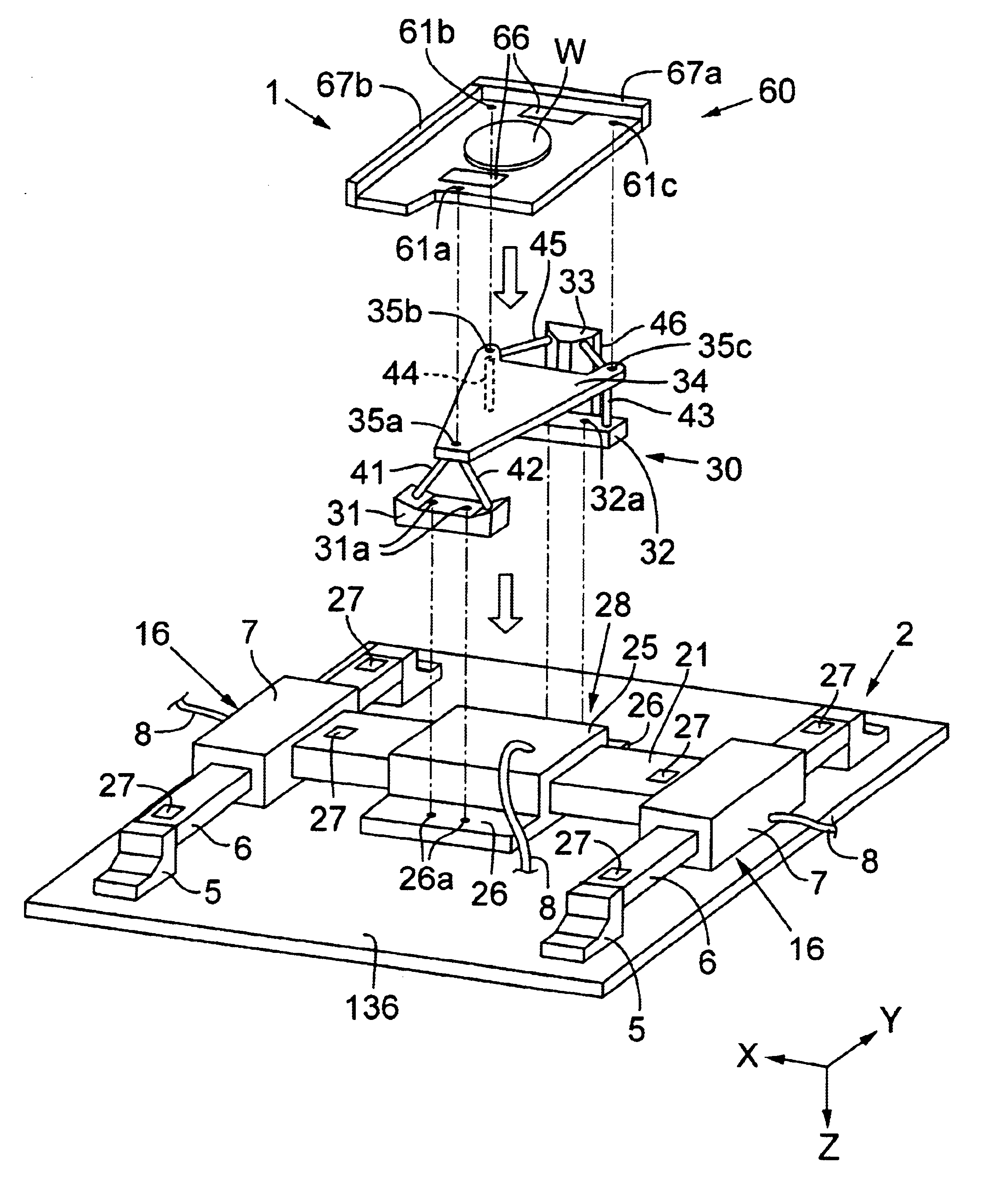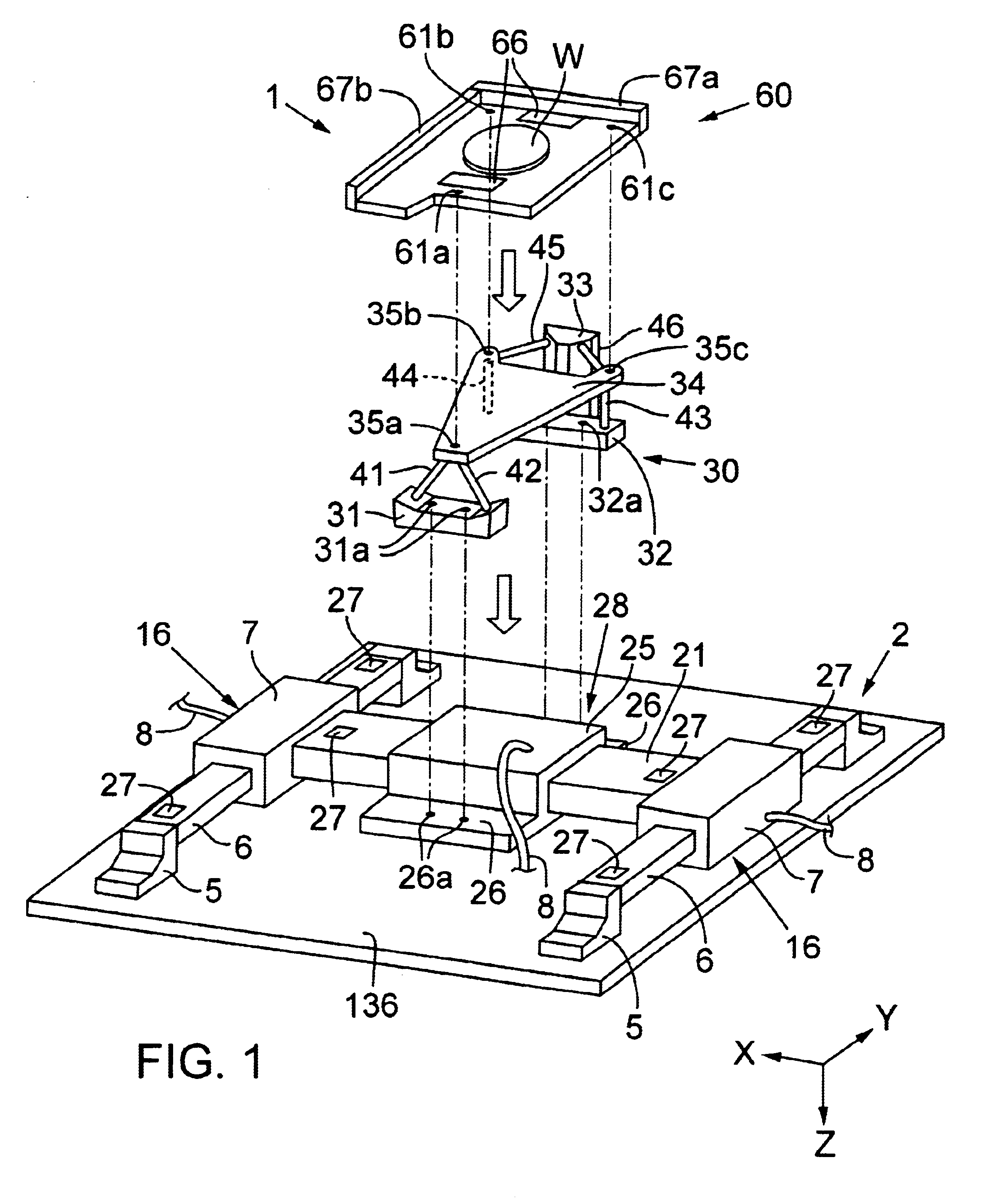Low-mass and compact stage devices exhibiting six degrees of freedom of fine motion, and microlithography systems comprising same
a stage device and compact technology, applied in the field of microlithography, can solve the problems of large stage device overall, inpractical, and inability to meet the needs of small scale, and achieve the effect of low overall mass and low magnetic field fluctuations
- Summary
- Abstract
- Description
- Claims
- Application Information
AI Technical Summary
Benefits of technology
Problems solved by technology
Method used
Image
Examples
Embodiment Construction
The invention is described below in the context of representative embodiments that are not intended to be limiting in any way. Also, the various embodiments are described in the context of an electron-beam microlithography system as a representative charged-particle-beam microlithography system. It will be understood that the principles described below are applicable with equal facility to microlithography systems utilizing an alternative type of charged particle beam, such as an ion beam, and to microlithography systems utilizing another type of energy beam, such as a VUV beam, X-ray beam, or EUV beam. The following also will be understood: (1) The stage devices described below can be used in general for positioning of an object in any of various environments, including a vacuum environment and / or in an environment in which suppression of fluctuating magnetic fields is important. (2) The reticle or mask (generally termed “reticle” herein) referred to herein can be a refractive or r...
PUM
| Property | Measurement | Unit |
|---|---|---|
| magnetic-field | aaaaa | aaaaa |
| magnetic fields | aaaaa | aaaaa |
| friction | aaaaa | aaaaa |
Abstract
Description
Claims
Application Information
 Login to View More
Login to View More - R&D
- Intellectual Property
- Life Sciences
- Materials
- Tech Scout
- Unparalleled Data Quality
- Higher Quality Content
- 60% Fewer Hallucinations
Browse by: Latest US Patents, China's latest patents, Technical Efficacy Thesaurus, Application Domain, Technology Topic, Popular Technical Reports.
© 2025 PatSnap. All rights reserved.Legal|Privacy policy|Modern Slavery Act Transparency Statement|Sitemap|About US| Contact US: help@patsnap.com



